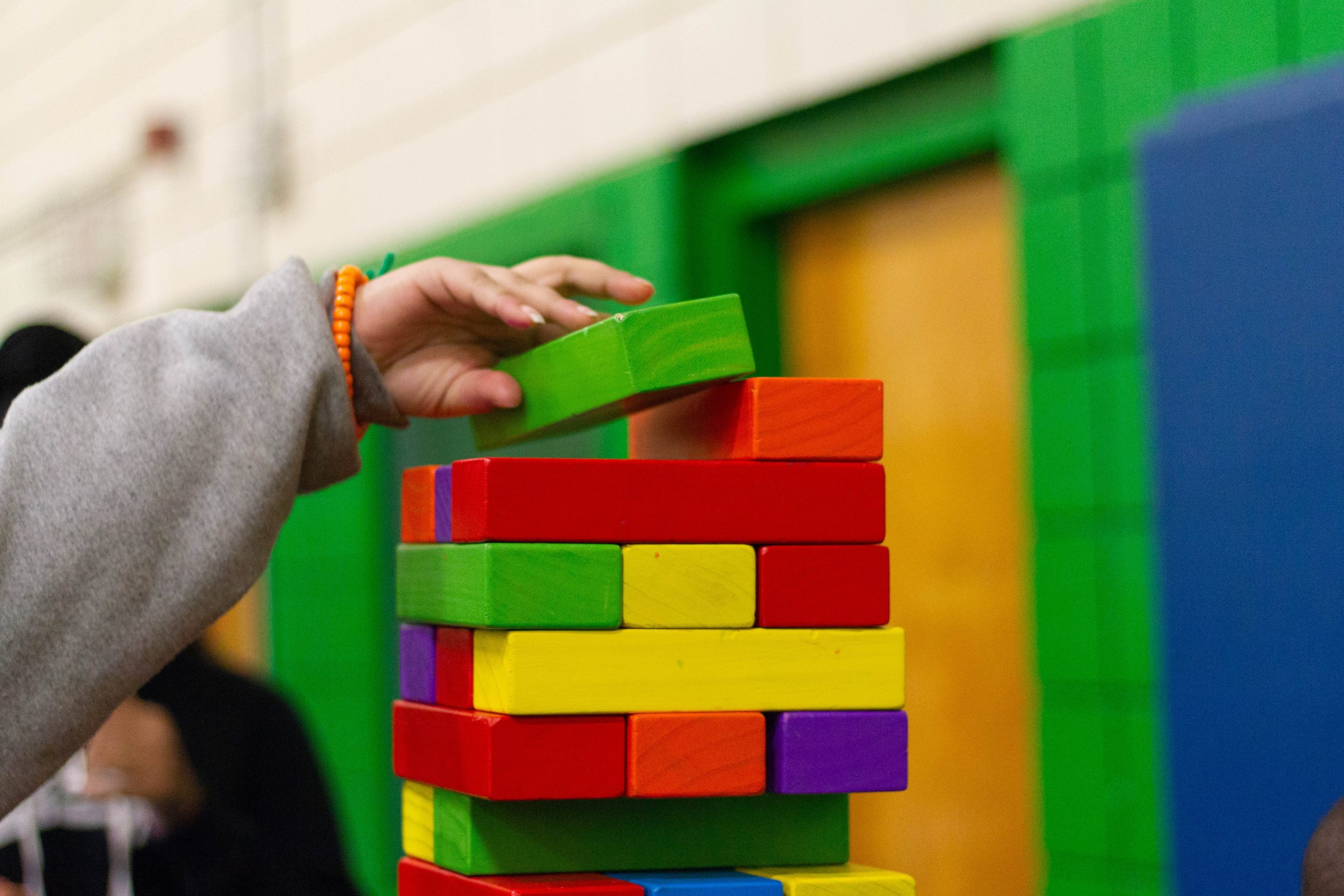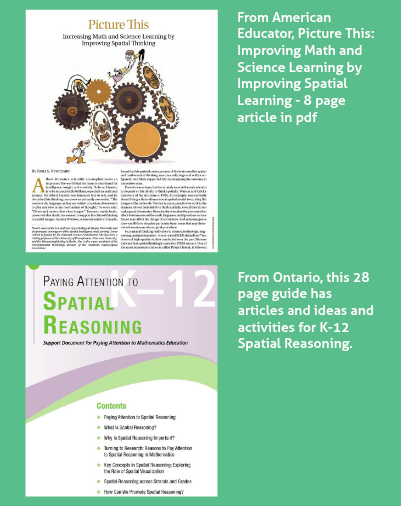“Spatial ability is not a simple matter. It is not just a picture-like memory for objects, places, and people. This kind of memory might be helpful in carrying out spatial tasks, but it is not at the core of what is meant by spatial ability. Spatial mechanical thinking involves the capacity to put the world together inside one’s head such that all things relate to all others in precisely understood ways. The distance and directional positioning between a whole host of things is so well understood that all become part of an interconnected system.”
Dyslexic people are more likely to be able to visualize in 3 dimensions, turning over what they see in their minds. When Brock and I interviewed James Russell, the inventor of the compact disk, he told us that he was able to design his inventions in vivid detail in his mind – running experiments on them, and tweaking them before he even picked up a tool. It was like that for Marc Rowe who would do surgery in his mind with different approaches and techniques until he decided what was best. It’s abilities like these that allow dyslexic pioneers to really do something that no one has ever done before.
How do these 3D talents get developed and what sorts of experiences may help young people discover their gift?
James Russell was making simple radio-controlled boats and cars from an early age, and following around an electrician (he would hold the flashlight) as he fixed household appliances like ovens. It is likely that although people are intrinsically born with certain aptitudes, a lifetime of handwork and spatial problem solving continue to remodel the brain making them into spatial experts.
Hands-on knowledge is really that – “in the hands” or kinesthetic – and not to be confused with visual. Working with materials, turning them over in your hands, feeling the weight of different objects, feeling the ‘give’ of real materials all adds to the knowledge of constructing first prototypes later. Said Eugene Ferguson, about the knowledge of creating a large machine like a steam turbine-driven generator: “not only visual, but also tactile and muscular knowledge are incorporated in the machine.”
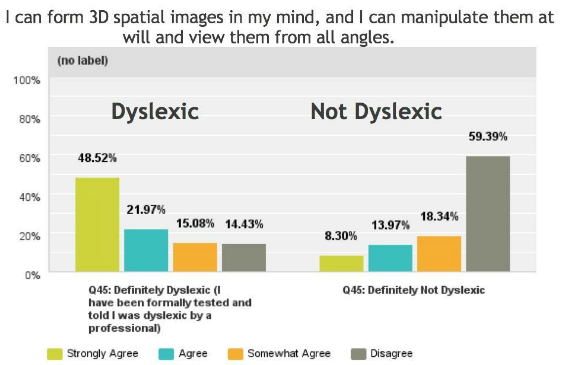
Not surprisingly, spatial abilities are correlated with higher performances in STEM (Science, Technology, Engineering, Mathematics) disciplines. Dyslexic students who may appear undistinguished or in the middle of the pack in routine language- heavy classes, may pop up in middle school or high school with top-of-the-class abilities in STEM classes because of their spatial expertise and problem solving abilities.
Because of the shortage of engineers, there is a great push in STEM education, but many of the most naturally-talented spatial students may not be given the opportunity unless they have an opportunity to recognize their talents.
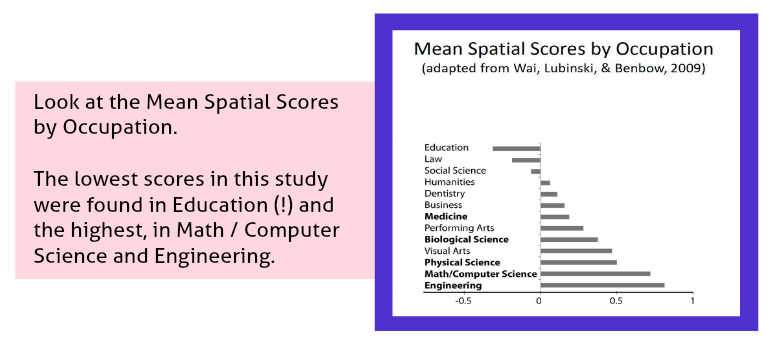
“Without experiment, I am sure that the effect will happen…because it must happen that way.” – Galileo Galilei
A thought experiment is an experiment in the mind that is usually a test of a theory. For instance, Einstein’s thought experiment at the age of 16 involved Einstein imagining himself riding on a light wave as he watched a second light wave moving parallel to his. He reasoned that the other wave would appear to moving at a speed of zero, but nothing in Maxwell’s theory would account for this. This thought experiment later gave rise to his notion of special relativity.
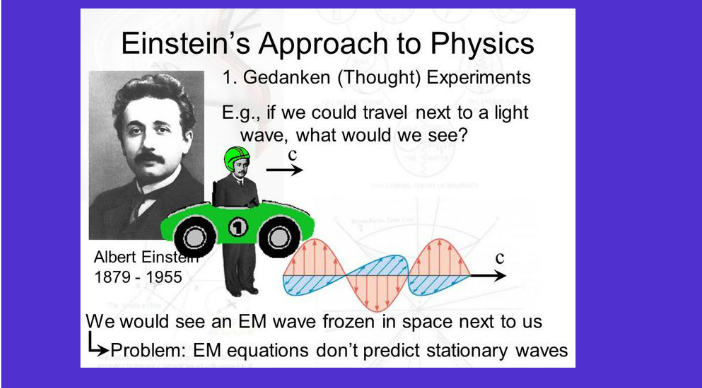
Many scientific breakthroughs have occurred as the result of thought experiments, and some scientists have a theory of why this is true: From John Clement: “…these simulations can generate new knowledge using several sources, including the ‘extended application’ of perceptual motor schemas, implicit prior knowledge, and spatial reasoning operations, in contrast to formal arguments.” Thought experiments tap into implicit (not-expressed) 3D spatial knowledge using analogous mental models. Clement concluded that successful thought experiments in science were not mere flights of fantasy, but rather “distillations of practice, based on real-world experience.”
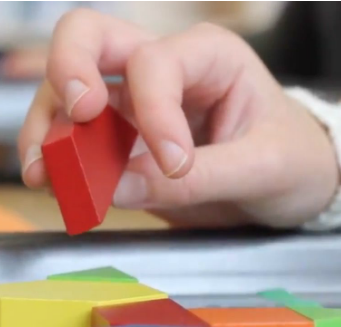
It’s interesting to see that spatial problem solving and visualization are being recognized as important foundations for mathematics and higher science. The video above shows K-2 students and teachers working with materials and solving problems that give students plenty of physical practice working with three-dimensional materials. One teacher observed, “When we start doing this work in spatial reasoning, we often discover these kids that have strengths in these other areas that have been untapped.”
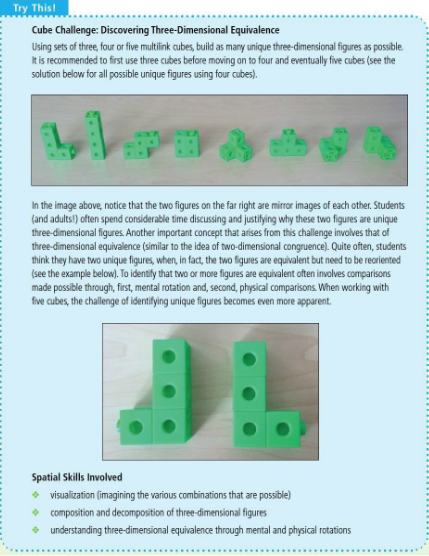
For more ideas and resources about spatial problem solving and reasoning in 3D, check out these great resources:

